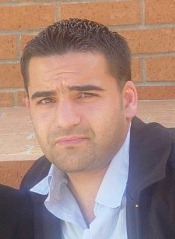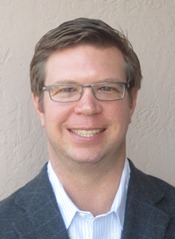You are here
Banking Stem Cells From Umbilical Cord Tissue For Future Regenerative Medicine Applications
 |  |
Umbilical cord blood is a great source of young blood-forming stem cells (called hematopoietic stem cells or HSCs). Currently, stem cells from cord blood are used in the treatment of a host of blood-related diseases. However, a major drawback of cord blood transplants is the limited volume of blood that can be collected from a single umbilical cord. Consequently, a limited number of stem cells can be derived from a single cord blood collection.
Transplants are more successful with a higher cell dose, hence numerous methods are currently under investigation to increase the efficiency of cord blood transplants, including ex vivo expansion of the hematopoietic stem cells before transplant, increasing the homing of hematopoietic stem cells to the patient's bone marrow, direct injections into the patient's femoral bone, and transplants with multiple cord blood units. A more straightforward method is to utilize another stem cell population - mesenchymal stem cells (MSCs) - for co-transplantation with a cord blood unit.
MSCs are a natural choice for co-transplantation with HSCs from cord blood, because MSCs are protein factories that produce growth factors and cytokines that signal and cue the HSCs to maintain proper blood and immune function. Due to this complex, symbiotic relationship, it has recently been found that when MSCs are co-transplanted together with HSCs, they enhance the stem cell engraftment up to 6-fold [1,2].
In adults, HSCs and MSCs are found together within bone marrow and the two populations work in concert to maintain blood function. But while infant cord blood is a rich source of HSCs, it is a poor source of MSCs. At birth, the richest source of MSCs is "after birth" tissue - especially within the Wharton's Jelly of the umbilical cord tissue.
The MSCs in umbilical cord tissue can easily be harvested and banked alongside umbilical cord blood. Currently, there are two main methods to bank MSCs from the cord tissue. The first is to simply chop the cord into small pieces and cryopreserve the minced tissue, with the MSCs inside the tissue, for later processing. The second is to thoroughly process the tissue upfront so that the MSCs are extracted and can be saved in "treatment ready" form.
Our company, AuxoCell, has developed a method to extract MSCs from cord tissue by first mechanically mincing the tissue, followed by an enzymatic digestion to "melt" away the tissue, while releasing the native MSCs. The released MSCs can be easily collected and cryopreserved as a single cell suspension, much like stem cells from cord blood.
The pros and cons of extracting MSC before or after freezing involve many factors, including: time, cost, cell potency, and cell therapy regulations. Although both methods render MSC products suitable for cell therapy, they are quite different. The final MSCs derived from frozen tissue are biologically different than the native MSCs collected prior to freezing.
The advantage to the bank of freezing tissue without extracting cells is that this method is simple, quick, and inexpensive. However, should the client family wish to use the MSCs in that tissue for therapy, it would require that the tissue be thawed, the surviving MSCs extracted, and those MSCs would have to be cultured in the lab to grow a sufficient population for therapy. This process would take weeks, run up costs, and result in a final cell population that the US FDA would regulate as a drug.
The advantage of extracting cells before freezing is that this method derives native MSCs with high potency that can be directly transplanted into the patient right away - in the same manner as the HSCs from cord blood - without any significant manipulation. Although MSCs can be extracted from frozen minced cord tissue, in practice, the efficiency of MSC recovery post thaw is approximately 10% relative to native MSC extraction from fresh (not cryopreserved) umbilical cord tissue [3,4]. Another advantage of preparing therapy with "minimally manipulated" cells is that they are not subject to the more rigorous drug regulations that are imposed on cultured cell products.
MSCs are also being investigated for clinical applications in treating auto-immune diseases (diabetes, Crohn's disease, graft-vs-host-disease), neurodegenerative disorders (Parkinson's disease, Alzheimer's) and cardiovascular diseases (acute myocardial infractions, ischemia) [5].
In summary, the use of stem cells - namely HSCs and MSCs - for therapy of both blood and non-blood disorders in patients is an exciting development in medicine. Stem cells from umbilical cord stem cells and tissue should be saved at every opportunity - instead of thrown out - in order to give ailing patients the opportunity to reap the benefits of the curative power of stem cells in regenerative medicine.
References
- Friedman R, Betancur M, Boissel L, Tuncer H, Cetrulo C, Klingemann H. Umbilical cord mesenchymal stem cells: adjuvants for human cell transplantation. Biol Blood Marrow Transplant. 2007 Dec;13(12):1477-86. PMID:18022578. Full text
- Taghizadeh RR, Pollok KE, Betancur M, Boissel L, Cetrulo KJ, Marino T, Wolfberg A, Klingemann HG, Cetrulo CL. Wharton's Jelly derived mesenchymal stem cells: Regenerative medicine beyond umbilical cord blood. Placenta 2011, 32(Suppl 4):S339. Abstract
- Taghizadeh RR, Mrowiec ZR, Cetrulo KJ, Cetrulo CL. unpublished data, 2010.
- Briddell R, Litkenhaus F, Foertsch G, Fuhrmann A, Foster K, Girard KF, Fiscus B, Boehm A, Brown M, Pettit M, Bridges AR, Nichols K, Fodor W, Kraus M. Recovery of viable MSCs isolated from fresh umbilical cord tissue, measured after cryopreservation, is on average 8-fold higher when compared to recovery of viable MSCs isolated from previously cryopreserved umbilical cord tissue. Blood (ASH Annual Meeting Abstracts). 2011;118. Abstract 4398. Abstract
- Taghizadeh RR, Cetrulo KJ, Cetrulo CL. Wharton's Jelly stem cells: future clinical applications. Placenta. 2011 Oct;32 Suppl 4:S311-5. Epub 2011 Jul 6. Review. PubMed PMID:21733573. Abstract


